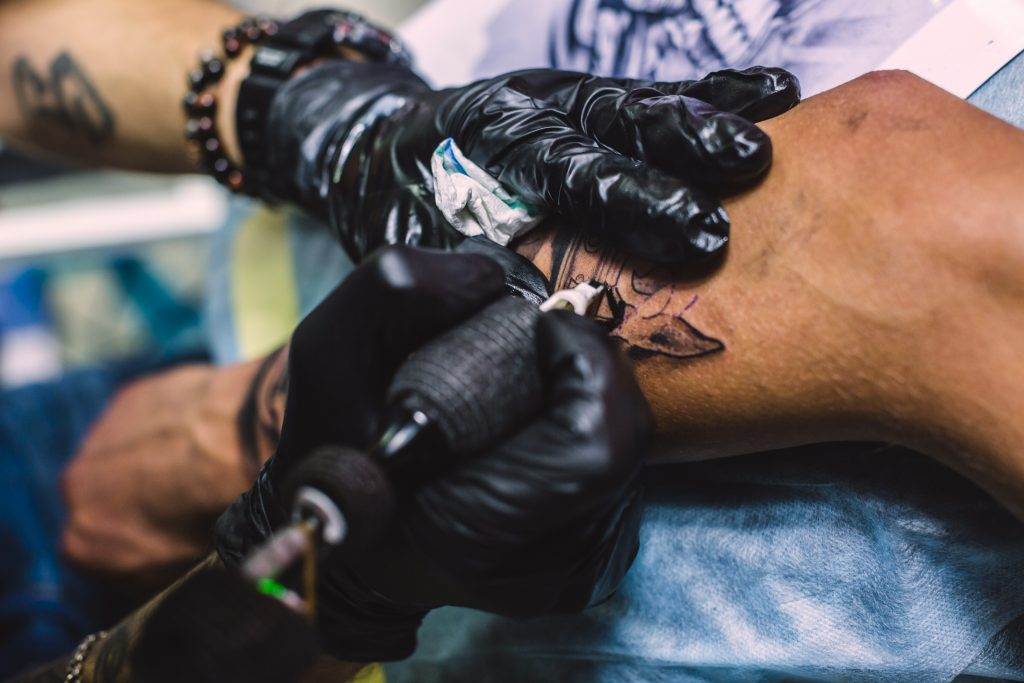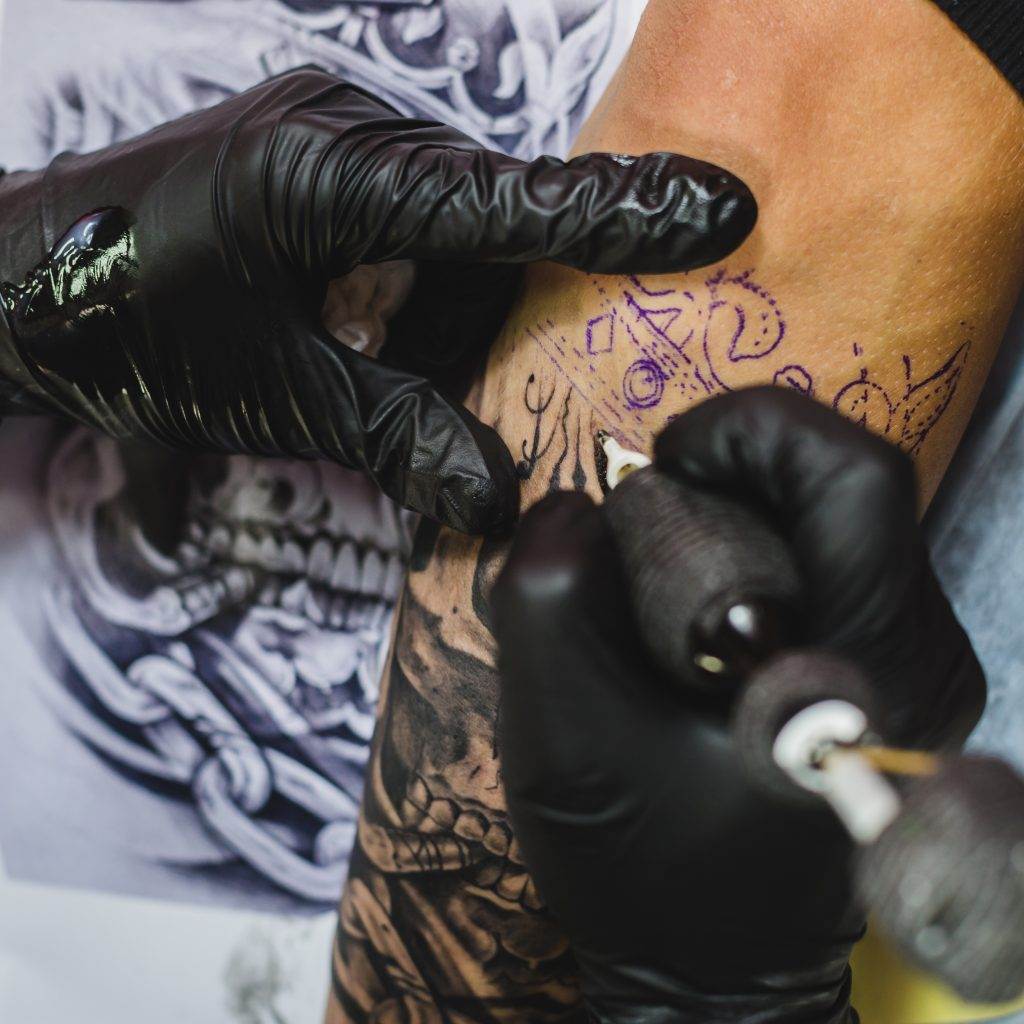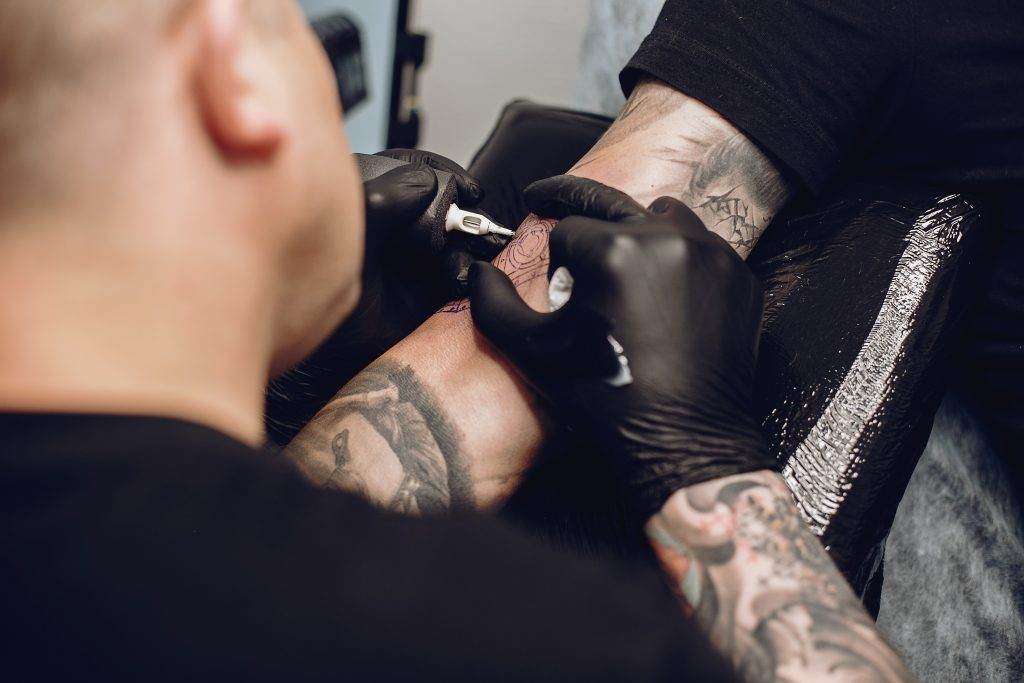The significance of tattoo touch-ups
Regular touch-ups on tattoos are essential to maintain their appearance and longevity. Over time, tattoos can fade and lose their vibrancy due to various factors. Touch-ups help to revitalize the colors and sharpness of the design, ensuring that it continues to look its best. Additionally, touch-ups can fix any imperfections or mistakes in the original tattoo, allowing the artist to refine the design and make necessary adjustments.
Common reasons for tattoo fading
Tattoos can fade for several reasons, including:
- Sun exposure: Continuous exposure to the sun’s UV rays can lead to the fading of tattoo pigments over time.
- Age: As the skin ages, it naturally loses elasticity and becomes more prone to fading.
- Poor aftercare: Inadequate care after getting a tattoo, such as not keeping it clean or moisturized, can result in the tattoo fading prematurely.
- Skin type: Some individuals have skin types that are more prone to retaining tattoos, while others may experience faster fading.
- Low-quality ink: Tattoos done with low-quality ink may fade more quickly than those done with high-quality ink.
Regular touch-ups can address these issues and ensure that your tattoo remains vibrant and visually appealing for years to come. It is essential to choose an experienced tattoo artist who understands the importance of touch-ups and can provide the necessary maintenance for your tattoo.
Understanding Tattoo Fading
Factors that contribute to tattoo fading
- Sun exposure: Continuous exposure to the sun’s UV rays can lead to the fading of tattoo pigments over time.
- Age: As the skin ages, it naturally loses elasticity and becomes more prone to fading.
- Poor aftercare: Inadequate care after getting a tattoo, such as not keeping it clean or moisturized, can result in the tattoo fading prematurely.
- Skin type: Some individuals have skin types that are more prone to retaining tattoos, while others may experience faster fading.
- Low-quality ink: Tattoos done with low-quality ink may fade more quickly than those done with high-quality ink.
Effects of sun exposure on tattoos
- Sun exposure can cause the tattoo colors to fade, resulting in a dull and less vibrant appearance.
- UV rays can break down the tattoo pigments, causing them to disperse and lose their sharpness.
- Over time, the sun can also cause the skin to age, leading to sagging and wrinkling around the tattoo area.
Regular touch-ups are necessary to address these issues and ensure that your tattoo remains vibrant and visually appealing for years to come. It is important to choose an experienced tattoo artist who understands the importance of touch-ups and can provide the necessary maintenance for your tattoo.

Maintaining the vibrancy and clarity of tattoos
Sun exposure, aging, poor aftercare, skin type, and low-quality ink are all factors that contribute to tattoo fading. Continuous exposure to the sun’s UV rays can lead to the fading of tattoo pigments over time. As the skin ages, it naturally loses elasticity and becomes more prone to fading. Inadequate care after getting a tattoo, such as not keeping it clean or moisturized, can result in premature fading. Some individuals have skin types that are more prone to retaining tattoos, while others may experience faster fading. Tattoos done with low-quality ink may also fade more quickly than those done with high-quality ink.
Enhancing the longevity of tattoos
Sun exposure can cause tattoo colors to fade, resulting in a dull and less vibrant appearance. UV rays can break down tattoo pigments, causing them to disperse and lose their sharpness. Over time, the sun can also lead to skin aging, causing sagging and wrinkling around the tattoo area. Regular touch-ups are necessary to address these issues and ensure tattoos remain vibrant and visually appealing for years to come. It is important to choose an experienced tattoo artist who understands the importance of touch-ups and can provide the necessary maintenance for your tattoo. This way, you can maintain the vibrancy and clarity of your tattoos and enhance their longevity.
The Importance of Tattoo Touch-Ups
Signs that your tattoo needs a touch-up
- Faded colors: If your tattoo colors have significantly faded or lost their vibrancy, it may be time for a touch-up. This is especially common in tattoos exposed to excessive sunlight or poor aftercare.
- Blurred or distorted lines: Over time, the lines of a tattoo can become less sharp and defined. If you notice that your tattoo lines are becoming blurred or distorted, a touch-up can help restore their clarity.
- Patchy areas: If there are areas of your tattoo where the pigments have become patchy or uneven, a touch-up can help even out the color distribution and improve the overall appearance.
- Discoloration: Tattoos can sometimes develop discoloration or changes in hue over time. A touch-up can help correct any discoloration and bring back the original color of the tattoo.
Recommended time frame for touch-ups
The ideal time to consider a tattoo touch-up is usually around 6-8 weeks after getting the initial tattoo. This allows the skin to heal properly and any initial fading or settling in the tattoo to occur. However, the need for touch-ups can vary depending on several factors, such as sun exposure, skin type, and the quality of the initial tattoo. It is advisable to consult with a professional tattoo artist who can assess your specific tattoo and provide personalized recommendations for touch-ups.

Regular touch-ups are essential for maintaining the vibrancy and clarity of tattoos. By addressing signs of fading, blurred lines, patchy areas, and discoloration, touch-ups help ensure that your tattoos remain visually appealing for years to come. An experienced tattoo artist can provide the necessary maintenance and enhance the longevity of your tattoos. So, if you notice any of these signs or feel that your tattoo could use some improvement, don’t hesitate to consider a touch-up.
The Tattoo Touch-Up Process
Preparation and aftercare for touch-ups
- Before the touch-up session, it is important to properly prepare your skin. This includes keeping the area clean and moisturized in the days leading up to the appointment. Avoid excessive sun exposure and tanning as it can affect the healing process and the effectiveness of the touch-up.
- During the touch-up session, the tattoo artist will examine the existing tattoo and determine the areas that need improvement. They will then use a tattoo machine to carefully fill in faded colors, sharpen lines, and correct any patchy areas or discoloration. The process may take a few hours, depending on the size and complexity of the tattoo.
- After the touch-up, it is crucial to follow proper aftercare instructions provided by the tattoo artist. This may include keeping the area clean, avoiding direct sunlight, and applying ointments or creams as recommended. Following these instructions will help promote proper healing and ensure the best long-term results.
- It is important to note that touch-ups may not always be able to completely restore a tattoo to its initial condition. Factors such as skin type, the quality of the original tattoo, and individual healing processes can affect the outcome. However, a skilled tattoo artist will strive to improve the overall appearance and longevity of the tattoo through touch-ups.
Overall, tattoo touch-ups are an important part of maintaining the quality and appearance of your tattoos. By addressing signs of fading, blurred lines, patchy areas, and discoloration, touch-ups can help ensure that your tattoos remain vibrant and visually appealing for years to come.
Tips for Maximizing the Results of Tattoo Touch-Ups
Proper aftercare and maintenance of touch-up tattoos
- Following the completion of a tattoo touch-up session, it is essential to prioritize proper aftercare to ensure the best possible results. This includes:
- Keeping the area clean: Gently wash the tattoo with mild, fragrance-free soap and lukewarm water. Pat the area dry with a clean towel and avoid rubbing or scratching.
- Avoiding direct sunlight: Protect the tattooed area from excessive sun exposure, as UV rays can fade the colors and damage the skin. If sun exposure is unavoidable, use a quality SPF30+ sunscreen to protect the tattoo.
- Applying recommended products: Your tattoo artist will provide specific aftercare instructions, which may include applying a thin layer of ointment or moisturizer to keep the skin hydrated. Follow these instructions carefully to promote proper healing.
- Stay hydrated and maintain a healthy lifestyle: Drinking plenty of water and adopting a healthy lifestyle can promote overall skin health, which in turn helps maintain the vibrancy and longevity of your touch-up tattoo.
By following these aftercare tips and maintaining a healthy lifestyle, you can maximize the results of your tattoo touch-up. Remember that each person’s healing process may differ, so it’s important to consult with your tattoo artist for personalized advice and instructions. With proper care, your touch-up tattoos can stay vibrant and visually appealing for years to come.



